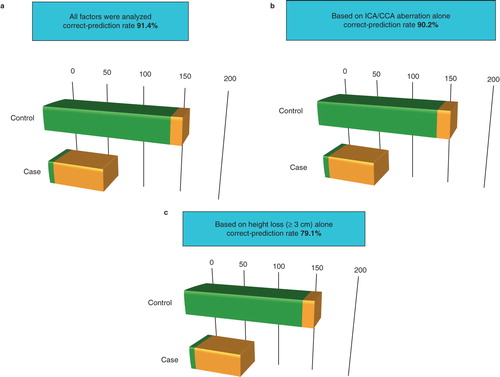Figures & data
Figure 1. Top: actual bent-posture in an 84-year-old female.(yellow dots). Lower: three-dimensional computed tomography (CT) showing aberration of the internal carotid artery on both sides. Aberrant carotid arteries in the mouth. A submucosal swelling pulsates in synchrony with the patient's heartbeat. Aberration of the internal carotid artery. Reproduced with permission from Tsunoda K et al. Ann Intern Med 2003;139:W-56 [Citation8].
![Figure 1. Top: actual bent-posture in an 84-year-old female.(yellow dots). Lower: three-dimensional computed tomography (CT) showing aberration of the internal carotid artery on both sides. Aberrant carotid arteries in the mouth. A submucosal swelling pulsates in synchrony with the patient's heartbeat. Aberration of the internal carotid artery. Reproduced with permission from Tsunoda K et al. Ann Intern Med 2003;139:W-56 [Citation8].](/cms/asset/643b3e3f-1c2b-4b88-9c5c-8d151191769f/ioto_a_587451_f0001_b.jpg)
Table I. Risk for ischemic stroke without established factors.
Figure 2. Stroke prediction based on possible risk factors. (a) Rates of discriminated stroke (orange) and normal (without stroke) (green) in control (upper) and case (lower) patients using all significant risk factors. (b) Based on ICA/CCA aberration alone. (c) Based on height loss (≥3 cm) alone.

Table II. Laterality in association between site of aberration of head/neck carotid arteries and brain infarction.
